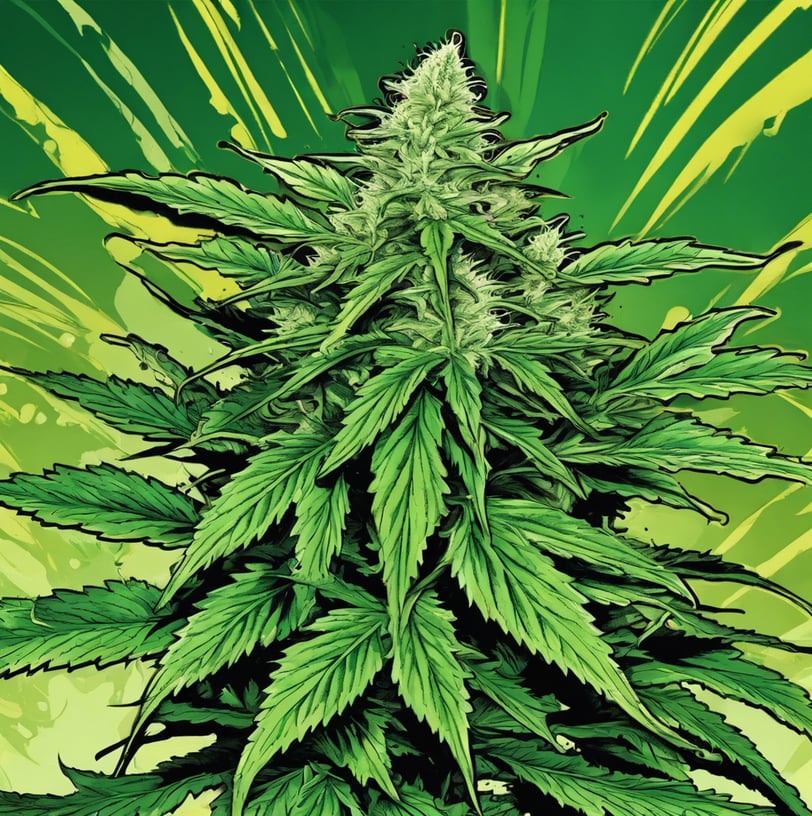Cannabis Indica: From Ancient Origins to Modern Cultivation
Explore the origins, evolution, and modern significance of Cannabis Indica, shedding light on what makes this plant unique in the world of cannabis cultivation.
smokyb420
6/2/20243 min read


Cannabis Indica, a sub-group of the cannabis family, has a storied history that spans centuries and continents. Originating from the rugged Hindu Kush valley—an 800-kilometer-long mountain range in Central and South Asia—Cannabis Indica developed unique characteristics that make it distinct from its Cannabis Sativa counterpart. This blog post explores the origins, evolution, and modern significance of Cannabis Indica, shedding light on what makes this plant unique in the world of cannabis cultivation.
The Hindu Kush valley, located to the west of the Himalayas, is characterized by its harsh, desert-like conditions. This environment played a crucial role in shaping the unique traits of Cannabis Indica. Historically, the Hindu Kush region was a significant center of Buddhism, home to ancient monasteries, the famed Bamiyan Buddhas, and bustling trade networks. These factors contributed to the spread and cultural significance of Cannabis Indica.
Cannabis Indica is easily recognizable by its:
Broad Leaf Structure: The plant's broad leaves are an adaptation to the intense sunlight and dry conditions of the Hindu Kush valley.
Shrub-Like Appearance: Indica plants tend to grow shorter and bushier compared to the tall, lanky Cannabis Sativa.
Psychoactive Effects: Indica strains are renowned for their full-body euphoric sensations, pain relief, and deep relaxation. These effects are often described as a "body high," making Indica a popular choice for evening use and therapeutic applications.
As ancient trade networks connected Central Asia with South Asia, Cannabis Indica traveled along these routes, finding its way into various cultures and societies. It was used for medicinal, recreational, and spiritual purposes, reflecting its versatility and importance.
Over time, Cannabis Indica spread beyond its native Hindu Kush valley. Travelers and traders carried its seeds to new regions, where it adapted to different climates and growing conditions. This dispersion led to the development of numerous landrace strains, each with unique characteristics shaped by their environment.
In contemporary cannabis cultivation, pure Indica strains are relatively rare. Instead, many commercial strains are hybrids, developed by crossbreeding Cannabis Indica with Cannabis Sativa to combine the best traits of both sub-groups. This process of hybridization has led to a diverse array of cultivars with various effects, flavors, and growing characteristics.
Some of the most popular hybrid strains that feature Indica genetics include:
Blue Dream: A balanced hybrid that combines the relaxing effects of Indica with the uplifting qualities of Sativa.
CapeGorilla420: This 50/50 hybrid leans towards Indica dominance, delicately preserving the Sativa heritage from its predecessors. A bountiful producer with a 60-65 day flowering time, it boasts the potential to yield over 1kg per plant when grown outdoors.
Girl Scout Cookies (GSC): Known for its potent effects and sweet, earthy flavor, GSC is a cross between OG Kush (an Indica-dominant hybrid) and Durban Poison (a pure Sativa).
Northern Lights: One of the most famous Indica-dominant hybrids, Northern Lights is cherished for its powerful body high and resilience in cultivation.
Modern growers have developed advanced cultivation techniques to optimize the growth and yield of Indica strains. These methods include:
Controlled-Environment Agriculture: Using indoor growing facilities with controlled lighting, temperature, and humidity to create optimal conditions for Indica plants.
Hydroponics and Aeroponics: Soil-less growing methods that provide plants with a nutrient-rich solution, promoting faster growth and higher yields.
Selective Breeding: Carefully selecting parent plants with desirable traits to create new hybrids with improved potency, flavor, and resilience.
Cannabis Indica is particularly valued for its therapeutic properties. The plant's high levels of CBD (cannabidiol) and other cannabinoids make it effective in:
Pain Relief: Indica strains are commonly used to alleviate chronic pain, making them a staple in medicinal cannabis.
Anxiety and Stress Reduction: The deep relaxation and calming effects of Indica can help manage anxiety and stress.
Sleep Aid: Many users turn to Indica for its sedative effects, which can promote restful sleep and help with insomnia.
For recreational users, Cannabis Indica offers a different experience compared to Sativa. The full-body high and relaxation make it ideal for unwinding after a long day, enhancing sensory experiences, and promoting social relaxation.
Despite the prevalence of hybrid strains, pure Indica and Indica-dominant hybrids remain popular in the cannabis market. Consumers appreciate the consistent and reliable effects of Indica, as well as the rich flavors and aromas that these strains often possess.
Cannabis Indica's journey from the ancient Hindu Kush valley to modern-day cultivation is a testament to the plant's resilience and adaptability. Its unique characteristics, shaped by centuries of evolution and human intervention, continue to make it a vital part of the cannabis industry.
For commercial cannabis growers, understanding the origins and evolution of Cannabis Indica can inform better cultivation practices, breeding programs, and product development. By honoring the plant's rich history and embracing modern innovations, growers can ensure that Cannabis Indica remains a cornerstone of the cannabis world, offering therapeutic benefits and enjoyable experiences to consumers worldwide.
As the cannabis industry continues to evolve, the story of Cannabis Indica serves as a reminder of the plant's deep cultural roots and the endless possibilities for its future.
Contacts
bart@smokyb420.com
(+27) 084-717-2943
